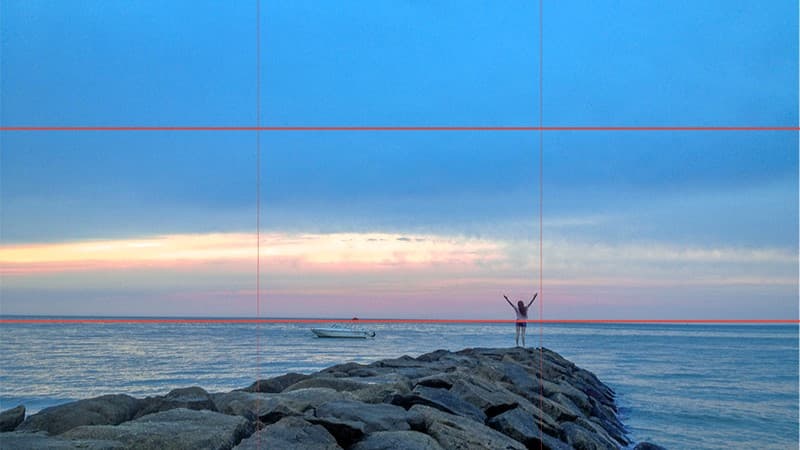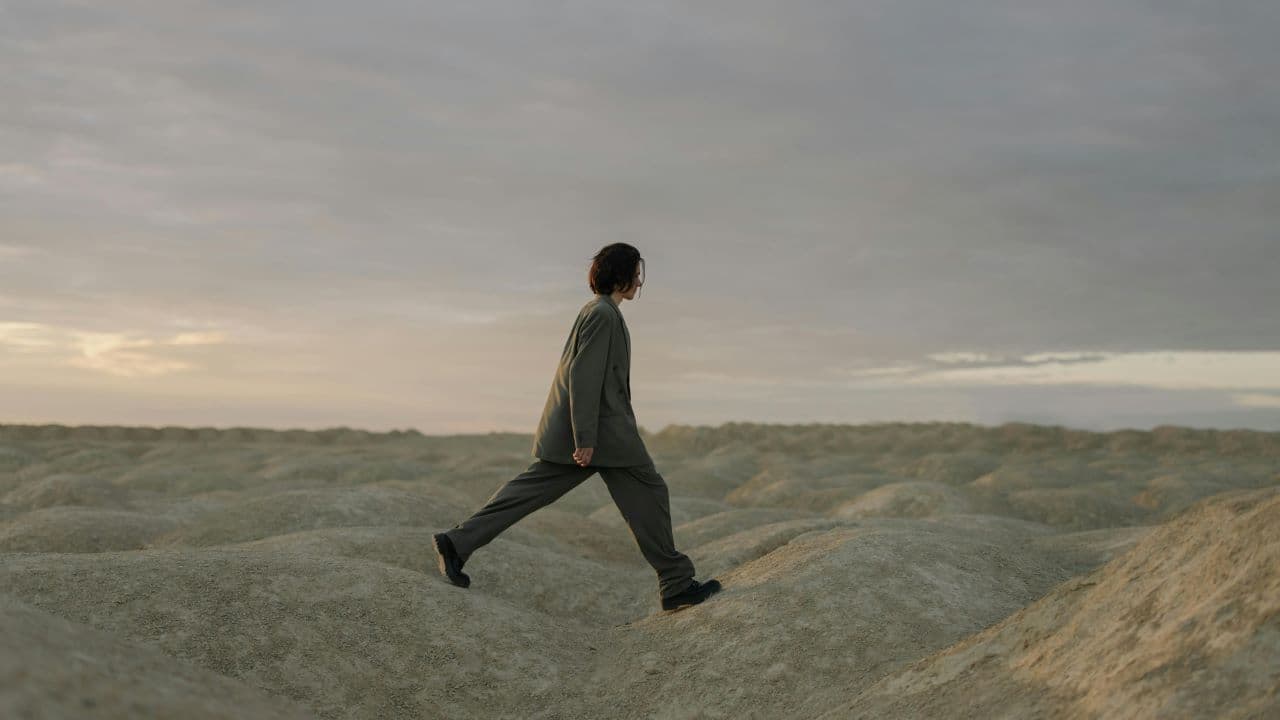Do you want to take your photography skills to the next level? Understanding the rule of thirds is a game-changer. It’s not just another technique; it’s the secret ingredient that can transform your photos from average to outstanding. Imagine capturing breathtaking landscapes, stunning portraits, and captivating still-life shots effortlessly. By mastering this fundamental principle, you’ll be able to create visually appealing compositions that draw viewers into the heart of your images.
But what is the rule of thirds, and how can you enhance your photography? From its origins to practical tips on implementation, we’ve got you covered. Get ready to elevate your photography game with the power of the rule of thirds!
Key Takeaways
- Use the rule of thirds to improve your photography composition by placing key elements along the grid lines or at their intersections.
- Experiment with creative applications of the rule of thirds to add visual interest and balance to your photos.
- Practice post-processing techniques to enhance the rule of thirds composition in your images.
- Apply the rule of thirds concept to graphic design to create visually appealing and balanced layouts.
- Understand the differences between the rule of thirds and the golden ratio to choose the most suitable composition technique for your specific artistic goals.
- Maximize the impact of your subject placement by utilizing the rule of thirds to create compelling and well-balanced visual compositions.
Understanding the Rule of Thirds

Concept Overview
When capturing a photo, the rule of thirds helps you create visually appealing compositions. It divides the image into nine equal parts using two horizontal and two vertical lines. This grid guides you in placing key elements or subjects off-center, at the intersections, or along the lines. By doing so, it adds balance and interest to your photos.
For instance, if you’re taking a picture of a sunset, instead of placing the horizon right in the middle, you can position it along one of the horizontal lines to create a more captivating composition. Similarly, when photographing people or objects, aligning them with these imaginary lines can make your images more dynamic and engaging.
The rule of thirds isn’t just about where to place subjects; it’s also about how different elements interact within the frame. For example, when shooting landscapes, this principle can help you find harmony between the sky and land by allocating space accordingly within each section defined by these imaginary lines.
Historical Context

Originating from 18th-century visual arts theories that aimed for balanced compositions in paintings and drawings, the rule of thirds gained traction in photography during the 20th century as cameras became more accessible. Its influence continues to be felt strongly today across various genres like landscape photography, portraiture, and street photography – even food photography benefits from this age-old concept!
The rule of thirds has stood as a fundamental principle since its inception because it offers photographers an effective way to compose their shots for maximum impact. Understanding this historical context behind its adoption into photography practices over time gives you insight into why it remains an essential tool for creating compelling visuals.
Grid Lines and Composition
When taking a photo, grid lines can be your best friend. They help you apply the photography rule of thirds effortlessly. These lines are like an invisible tic-tac-toe board that divides your frame into nine equal parts.
These grid lines allow you to easily align vital elements in your composition to create visually appealing images. For instance, if you’re capturing a breathtaking sunset, you can position the horizon line along one of the horizontal grid lines to achieve balance and harmony in your shot.
Moreover, many modern cameras and smartphone camera apps have an overlay feature that displays these grid lines on your screen while taking photos. This makes it incredibly convenient to compose stunning shots without additional tools or accessories.
Placing essential elements at the points where these grid lines intersect is crucial for creating engaging compositions. By doing so, you draw the viewer’s eye directly to these critical areas of interest within your photograph.
Imagine wanting to capture a beautiful landscape with a striking tree as its focal point. Placing this tree at one of the intersecting points draws attention. It adds depth and balance to the overall image composition. It’s like strategically placing puzzle pieces – each element fitting perfectly into place.
In addition to using vertical and horizontal alignments based on the rule of thirds, consider incorporating diagonal alignment into your compositions. Diagonal lines add movement and energy to images by guiding the viewer’s eyes through different parts of the scene.
For example, when photographing a winding road amidst picturesque mountains, positioning it diagonally across your frame creates visual flow and engagement. The dynamic nature of diagonal alignment enhances storytelling within photographs by leading viewers on an exciting visual journey through your image.
Rule of Thirds in Photography

Landscape Photography – Showcasing Natural Elements
When capturing landscape photography, the rule of thirds can help you create visually appealing compositions. You can effectively emphasize these natural features by aligning key elements such as the horizon, trees, or mountains along the grid lines or at their intersections. For instance, if you photograph a sunset over a beach, positioning the horizon along the lower third of your frame can accentuate the sky and the water equally.
Balancing different aspects of a landscape becomes more manageable with this technique. Placing significant foreground details like rocks or flowers in one section while having mountains or clouds occupy another creates an equilibrium within your photo. This balance allows viewers to engage with various elements without feeling overwhelmed by any single aspect.
Creative Application

Now, let’s talk about breaking the convention. When you experiment with deviating from the traditional guidelines of the rule of thirds, you intentionally disrupt compositional norms for a creative effect. By doing this, you can create unique and thought-provoking visual narratives that captivate your audience.
By avoiding overemphasis on a single element in your photographs, you ensure that no one part dominates the entire frame. This helps maintain balance by distributing visual weight evenly across the image. As a result, distractions are prevented from overpowering the main subject of your photograph.
Recognizing breakpoints is crucial in photography composition as it allows you to identify when deviating from strict adherence to the rule of thirds is appropriate. This recognition gives you flexibility in composition based on your artistic intent and encourages creative exploration beyond conventional boundaries.
Mastering the Technique
Strategies for Mastery
To truly master the photography rule of thirds, you need to practice incorporating it into various photographic scenarios. This means experimenting with different placements and subjects to achieve diverse outcomes. For example, when capturing a landscape, try placing the horizon along one of the horizontal lines in the grid to create a more balanced composition. By doing so, you can train your eye to naturally apply this technique in any situation.
Analyzing successful examples is also crucial for understanding the effective implementation of the rule of thirds. Look at professional photographs or even your own work and evaluate how the placement of critical elements contributes to the overall impact of each image. By doing this, you can start recognizing patterns and visualizing how applying this technique enhances your compositions.
Analyzing Influential Work
Studying renowned photographers’ use of the rule of thirds in their work is another valuable step toward mastering this compositional tool. Take some time to explore famous photographs and analyze how these artists have utilized this technique to create impactful compositions and storytelling techniques. By adhering to the rule of thirds, certain elements become more prominent or draw attention in a specific way within a photograph.
Evaluate how these influential works use this technique; consider what emotions or messages are conveyed through their strategic application of the rule of thirds. Doing so will help you understand its technical aspect and role in conveying meaning within an image.
Evolution and Relevance
As technology advances, so does its influence on modern photography practices involving the rule of thirds as a fundamental tool for creating compelling images, which remains relevant despite technological advancements. In fact, digital cameras often include an option where you can overlay a rule-of-thirds grid on your viewfinder or screen while composing an image—this further emphasizes its importance as a guiding principle for composition.
Moreover, social media platforms like Instagram have integrated features that enable users to align their photos according to the rule-of-thirds grid before posting them online—indicating that even in today’s digital age, this traditional compositional technique still holds significant relevance.
Rule of Thirds vs. Golden Ratio
Evaluating Differences
The rule of thirds is a fundamental principle used across various genres. In landscape photography, for example, you often position the horizon along one of the horizontal lines created by dividing the frame into three equal parts horizontally. This technique lets you capture a balanced and visually appealing image with a strong composition.
In portrait photography, applying the rule of thirds involves aligning the subject’s eyes or other critical features along one of the vertical lines or at their intersection points. Doing so draws attention to specific areas within your photograph while maintaining balance and harmony in your composition. Different genres may require slight adjustments in applying this technique. Still, its underlying principles remain consistent across all types of photography.
In street photography, for instance, capturing subjects off-center using the rule of thirds can create dynamic and engaging compositions that draw viewers into different elements within an urban scene. Whether it’s a person walking down a bustling street or an architectural detail against a backdrop of city life, this technique helps bring out visual interest while maintaining balance in your photographs.
Post-processing Techniques

Role of Cropping
Cropping plays a crucial role in enhancing the composition during post-processing. By leveraging cropping techniques, you can effectively align the critical elements of your photograph with the rule of thirds grid. This allows you to adjust the positioning and size of elements within your photo to achieve a more balanced and visually appealing composition.
Cropping enables you to eliminate any distracting or unnecessary elements from the edges of your photograph, helping direct the viewer’s attention towards the main subject or focal points. For example, suppose you have a landscape photo where the horizon falls in the middle. In that case, cropping can help reposition it along one of the horizontal lines per the rule of thirds.
Adjusting your crop can also create a stronger sense of balance and harmony within your photos. For instance, if you have an image featuring a portrait subject positioned dead center, applying a crop that aligns the subject’s eyes along one of the upper intersections will instantly make for a more engaging and dynamic composition.
Emphasizing Key Elements
In photography, emphasizing vital elements through rule-of-thirds composition adds depth and visual interest to your images. When editing photographs during post-processing, consider utilizing this technique to draw attention to specific subjects or features within each shot.
By positioning essential elements at or near one of these intersecting points created by dividing an image into nine equal parts (three across and three down), you naturally guide viewers’ eyes toward those areas first when they look at your photo. Imagine taking a picture where someone is looking off into space – placing them on one side rather than directly in front creates an immediate sense that something interesting is happening outside what’s visible on-screen.
This technique is particularly effective when capturing portraits or close-up shots, as it helps establish focus while adding visual intrigue. Whether showcasing someone’s expressive eyes or highlighting intricate details such as flowers or architectural features, incorporating this method enhances visual appeal and storytelling within photography.
Implementing Graphic Design
Comprehend how it aligns with fundamental design principles in photography.
When you apply the rule of thirds to graphic design, you adhere to a fundamental principle guiding composition. This principle can also be used in graphic design, like photography, where the rule of thirds helps create balanced and visually appealing images. By dividing your canvas into nine equal parts using two horizontal and two vertical lines, you can position vital elements at the intersecting points or along these lines. This technique draws attention to the focal points and creates a more dynamic and engaging composition.
Using the rule of thirds in graphic design allows for better visual balance and harmony within your designs. Placing essential elements such as text, images, or logos at one of these intersection points can lead to a more aesthetically pleasing layout. For example, if you’re designing a poster for an event, positioning the main subject slightly off-center using the rule of thirds can make the overall composition feel more natural and compelling.
Utilize editing tools to refine the rule of thirds composition during post-production.
After capturing an image or creating a graphic design layout following the rule of thirds guideline, image editing tools come into play during post-production. These tools enable you to enhance your compositions by fine-tuning element placement according to the rule of thirds grid lines or intersection points. For instance, when editing photographs using software like Adobe Photoshop or Lightroom, you can use grid overlays based on the rule of thirds while cropping or repositioning elements within your image.
Moreover, these editing tools offer features such as alignment guides that help ensure precise positioning based on this compositional principle. When working with graphic designs in software like Adobe Illustrator or Canva, grids and rulers aligned with the rule of thirds facilitate accurate element placement for achieving visually impactful layouts.
Maximizing Subject Placement

Subject Placement Strategies
When composing a photograph, the rule of thirds is a valuable guideline to enhance the visual appeal of your images. You can create visually compelling and balanced compositions by strategically placing the subject within the intersecting points or along the grid lines. For instance, when capturing a landscape, positioning the horizon on one of the horizontal lines and placing key elements like mountains or trees at the intersections can result in a more engaging and dynamic image.
Furthermore, when photographing portraits or still-life subjects, aligning their eyes or essential features with these gridlines can draw attention to specific areas while maintaining balance within the frame. This technique creates visually appealing photographs and guides viewers’ eyes through the image naturally and harmoniously.
In addition to that, utilizing strategic subject placement within the rule of thirds framework allows you to incorporate negative space effectively. Placing your main subject off-center creates room for negative space around it, emphasizing your subject while providing breathing space for visual impact.
Emphasizing Composition Elements
Emphasizing composition elements such as leading lines, symmetry, patterns, and textures within the rule of thirds framework significantly enhances overall visual impact and storytelling potential in photography. For example, aligning leading lines with one-third gridlines or intersections helps naturally guide viewers’ gaze through an image. This draws attention to crucial aspects of your composition while creating depth and interest.
Moreover, leveraging this compositional approach highlights symmetry in architecture or nature scenes by positioning key elements along these imaginary gridlines. It brings balance and harmony into your images while making them aesthetically pleasing.
Additionally, the rule of thirds aids in emphasizing patterns and textures by allowing photographers to position them strategically within different sections of their images. Whether capturing urban landscapes with repeating patterns on buildings or close-up shots showcasing intricate textures in nature photography—incorporating these elements according to the rule of thirds fosters captivating visuals that resonate with viewers.
Summary
You’ve now grasped the essence of the rule of thirds in photography. Understanding how to effectively use grid lines and composition, creatively apply the technique, and mastering it will enhance your photography skills significantly. Exploring the rule of thirds versus the golden ratio, post-processing techniques, and implementing it in graphic design broadens your understanding of its versatility. Maximizing subject placement within the rule of thirds framework will undoubtedly elevate the impact of your visual storytelling.
Now that you’ve unlocked the potential of the rule of thirds grab your camera and start experimenting with this newfound knowledge. Apply what you’ve learned to your photography and design projects, and witness the remarkable transformation in your visual compositions. Keep honing your skills, and remember that practice makes perfect. Happy shooting!
Frequently Asked Questions
What is the Rule of Thirds in Photography?
The Rule of Thirds is a fundamental principle in photography composition. Imagine breaking an image into nine equal parts using two horizontal and two vertical lines, creating reference points to position the subject off-center for a more balanced and visually appealing shot.
How can I apply the Rule of Thirds in my Photography?
To apply the Rule of Thirds, visualize your scene divided into thirds both horizontally and vertically. Position key elements along these lines or at their intersections to create a compelling composition that draws viewers’ eyes toward the focal point with balance and harmony.
What are some Creative Applications of the Rule of Thirds?
Creative applications include:
- Using negative space strategically.
- Capturing leading lines within one-third of segments.
- Placing key elements like eyes or horizons on intersecting points.
Experimenting with unconventional placements while adhering to this rule can create captivating and dynamic photographs.
Can I use the Rule of Thirds in Graphic Design?
Absolutely! The principles behind the rule can be applied to graphic design as well. By aligning essential visual elements along these imaginary gridlines, designers can achieve balanced layouts that guide viewers’ attention effectively without feeling static or overly symmetrical.
How do Post-processing Techniques relate to the Rule of Thirds?
Based on this rule, post-processing techniques such as cropping or adjusting contrast can further enhance compositions. These adjustments allow photographers to fine-tune their images by strengthening focal points, refining proportions, and emphasizing visual flow within the frame.



